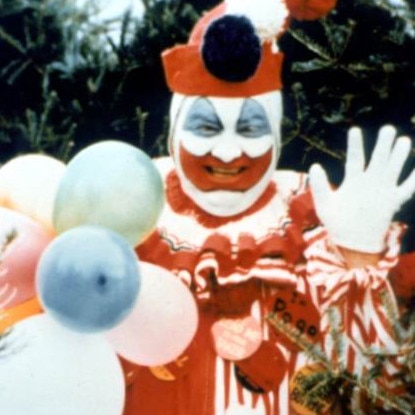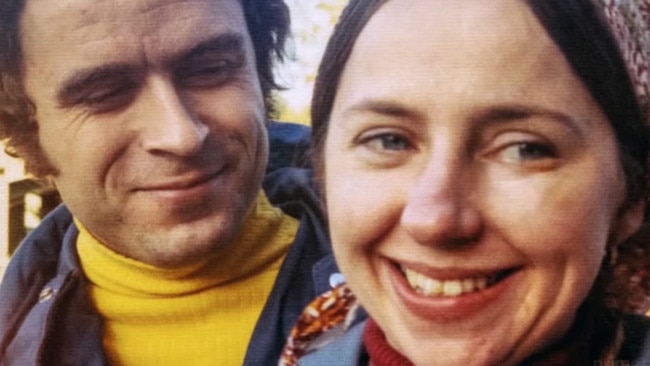Experts reveal how to spot a serial killer
The average person unknowingly walks past 36 killers in their lifetime. Find out if you have what it takes to spot one.

Real Life
Don't miss out on the headlines from Real Life. Followed categories will be added to My News.
Do you have what it takes to spot a cold-blooded serial killer?
Hollywood has done a stellar job in portraying these monsters as terrifying beings who lurk around every dark corner, thirsty for blood and ready to strike at any moment.
They are easily spotted: Think Halloween’s Michael Myers brandishing a butcher knife, Steven King’s horrifying Pennywise clown clutching his crimson balloon, or Scream’s iconic Ghostface donning that chilling white mask.
While these characters can make our blood run cold, we find solace in the fact that they are cinematic personalities, conjured up by zany screenwriters to give us all a little thrill.
It is when we think of the real-life monsters, the killers that walk among us, that we realise how truly unsettling our off-screen realities can be.


It has been said that the average person can unknowingly walk past 36 murderers in their lifetime.
Think about the stranger who you brushed shoulders with on the bus, the person standing in front of you in line to grab a coffee, or the passenger who sat down next to you on a plane.
Could one of them be a savage serial killer yet to be caught? How would you know if you were staring into the face of evil?
The fact is that most of us would not have a clue.
Oddly normal
Nancy Glass, a journalist who famously interviewed American serial killer Jeffrey Dahmer, along with other high-profile murderers and criminals during her career, said the most alarming thing about him was his ordinariness.
“My first impression of Dahmer was how normal he appeared,” she told The Sun.
“It makes you think that anybody could be capable of crimes like this. If he had acted like a maniac, I would have been more relieved.”

Dahmer, also known as the Milwaukee Cannibal or the Milwaukee Monster, was a serial killer and sex offender who killed and dismembered 17 males between 1978 and 1991.
Nancy added that while he was not exactly “charming”, his unbelievable normality meant that there was no way to have “picked him out of a crowd”.
But now experts have shed some light on the subtle signs to look out for.
Subtle signs
Behavioural scientist Cliff Lansley revealed that even the most “confident, hardened killers” can slip up, particularly during police interrogations.
Speaking to the Hippocratic Post, he said there are certain telling body language cues and gestures that can arise, but are usually only spotted by those who know what to look out for.
According to a study conducted in 1971 by social psychologist Professor Albert Mehrabian at the University of Los Angeles, body language makes up for 55 per cent of the meaning in how someone communicates their feelings.
Another 38 per cent comes from their tone, pitch and pace, while just 7 per cent comes from the actual words they are speaking.
Following this, Mr Lansley explained that when one is trying to determine whether a person is lying about being a murderer, it does not matter whether they maintain eye contact, sweat, or evade questions.
Rather, it is all about how their behaviour changes.
When starting to interrogate a killer, the interviewer might open up with some friendly banter and hold a harmless conversation that will put the suspect at ease.

They will bring up innocent topics such as their families and friends, or about their skills, education and hopes for the future.
It is during this period that Mr Lansley says it is important to note “how often they blink, the normal colour of their skin, their speech rate and how they maintain eye contact”.
Once this baseline is established, the interrogator is able to assess whether it changes once they begin to ask the heavy questions.
In doing this, they are able to establish when they are experiencing discomfort or stress, and when they could be lying.
Such changes in behaviour could include a faster speech rate or even blinking more.
He also points out that some criminals might use intense eye contact to gauge whether the interviewer is buying their story, while others may choose to avoid it altogether.
But he added that it is a common misconception to believe that someone looking away from you automatically means they are lying, as this is not always the case.
“Studies show that maintaining eye contact while telling an account is actually a stronger indicator of deception than looking away,” he said, “since this suggests someone is checking to see if they are being believed.”

Five common traits of serial killers
Criminologists have also revealed the most common traits of serial killers.
Working with Dr Elizabeth Yardley, director of the Centre for Applied Criminology at Birmingham City University, Real Crime magazine highlighted five key characteristics of serial killers.
A first sign to look out for is whether someone could be classified as a “power junkie”.
“Serial killers typically have a real affinity with power, even when they’ve been caught and know the game is up,” she said.
“Intent on exerting some kind of control over the people around them, they often hold back bits of crucial information in a bid to maintain power over the situation, gain attention and assert a warped sense of authority.”
Another common character trait is that they are often skilled manipulators.
“Apparent vulnerability and the need to please have been used effectively time and time again by serial killers as a way of hiding a sinister personality,” she continued.
“Some of the world’s best known serial killers have a frightening ability to manipulate those around them, pressing the right buttons in order to present themselves in a false light.

“They are also able to manipulate a situation in order to pass the blame for their actions.”
Serial killers are also usually huge egomaniacs and often love to brag about their crimes.
They can also come across as extremely charming and likeable.
“Serial killers tend to have a very good grasp of other people’s emotions,” Dr Yardley said.
“They are quick to pick up on any vulnerability or weakness in order to convince them into doing things they normally wouldn’t.”
However the most frightening trait of all, as mentioned earlier, is how some of the worst criminals in history can come across as completely normal.
“Many serial killers can look like a pillar of the community on first sight,” she added.
“It is a way of gaining trust, only to abuse it in the most appalling ways. This tactic has enabled many to get away with a lot of deviant stuff behind closed doors.”
Originally published as Experts reveal how to spot a serial killer





